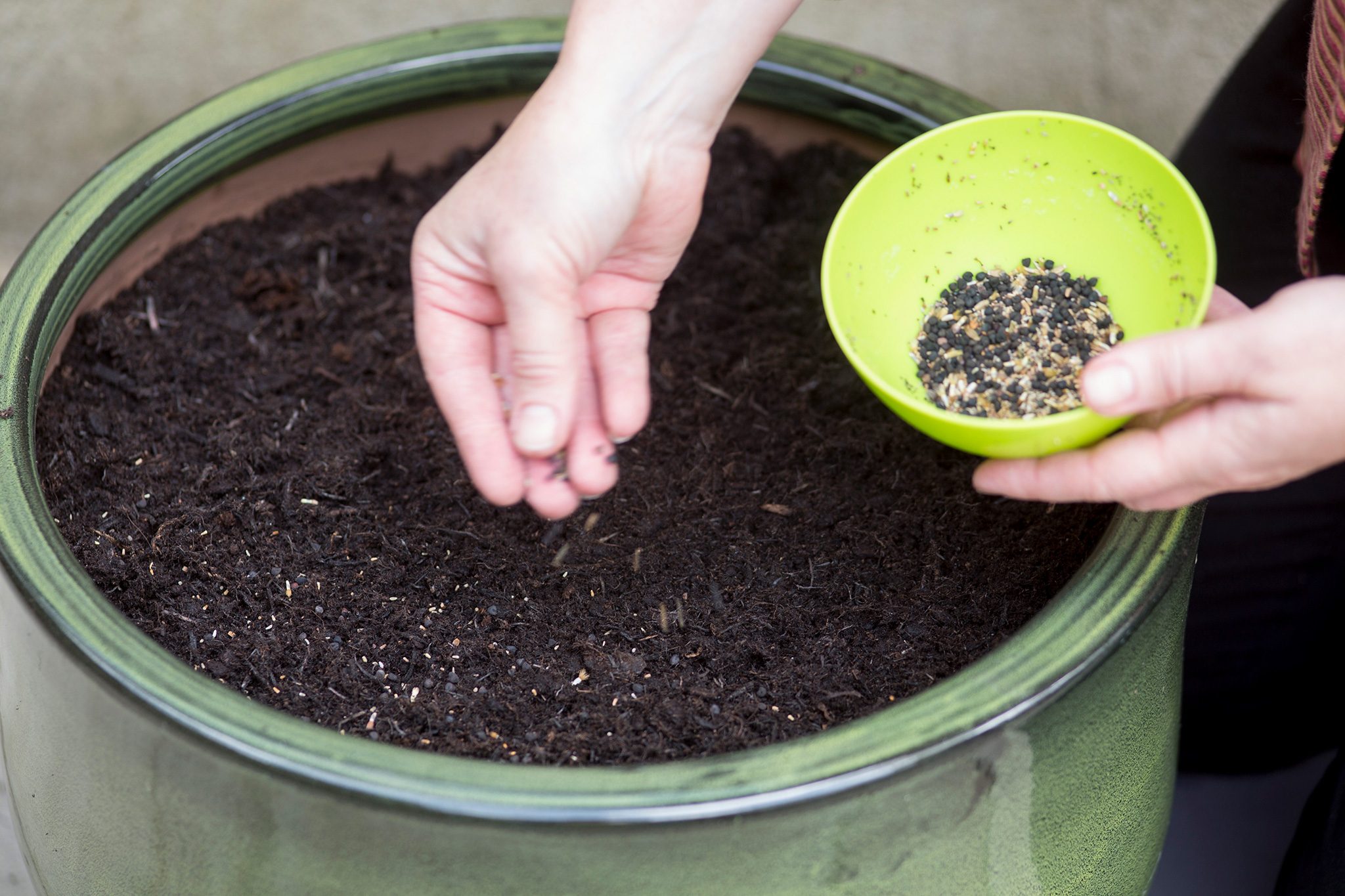If you’ve ever dreamed of stepping outside and seeing a beautiful field of colorful blooms dancing in the breeze — good news: you can make it happen easily! Planting wildflower seeds is one of the most rewarding and low-maintenance ways to create a stunning garden that attracts bees, butterflies, and birds.Whether you have a backyard, a balcony planter, or a small patch of soil, learning how to plant wildflower seeds is easier than you think. This guide will walk you through everything — from choosing seeds to caring for your wildflower garden — so you can enjoy a natural burst of beauty all season long.Let’s make it easy and start planting! 🌸🌼 Why Plant Wildflowers?Wildflowers are nature’s effortless art. They bring vibrant colors, rich biodiversity, and a sense of peace to any space. Here’s why planting wildflower seeds is such a great idea:Low maintenance: Once established, wildflowers practically care for themselves.Pollinator-friendly: They attract bees, butterflies, and hummingbirds.Eco-friendly: They improve soil health and support local ecosystems.Budget-friendly: A single seed packet can cover large areas with color.Natural beauty: They bloom in a charming, unstructured way that feels wild and free.🌿 Step-by-Step: How to Plant Wildflower SeedsFollow these simple steps to create your own blooming paradise.Step 1: Choose the Right Wildflower SeedsNot all wildflowers thrive in the same conditions. When choosing your mix, consider your region, soil type, and sunlight.Here are some popular types by region:U.S. & Canada: Black-eyed Susan, Coreopsis, Coneflower, and Wild Lupine.U.K.: Cornflower, Oxeye Daisy, Red Campion, and Poppy.Pro Tip: Look for a “native wildflower mix” — these species are adapted to your local climate and attract native pollinators.Step 2: Pick the Perfect LocationWildflowers love sunshine — choose a spot that gets at least 6 hours of sunlight daily.They can grow in garden beds, open fields, or even large pots and planters.Avoid shady or waterlogged areas, as seeds may rot or fail to sprout.Step 3: Prepare the SoilGood soil prep makes all the difference. Wildflowers don’t need rich, fertilized soil, but they do need space to grow.Here’s what to do:Clear the area — remove weeds, grass, and debris.Loosen the top 2–3 inches of soil using a rake or garden fork.Don’t over-fertilize — wildflowers thrive in lean soil. Too much fertilizer leads to more leaves and fewer blooms.Optional: Mix a small amount of sand with your seeds to help scatter them evenly.Step 4: Scatter the SeedsNow for the fun part — sowing your wildflower seeds!Sprinkle seeds evenly over the soil by hand or with a seed spreader.Lightly press them into the soil using your hands, feet, or a roller.Don’t bury them deeply — most wildflower seeds need sunlight to germinate.Seed Depth Rule: Only cover lightly (about ¼ inch or less).Step 5: Water GentlyAfter sowing, give your seeds a gentle watering using a fine spray or garden hose with a soft nozzle. Keep the soil consistently moist (but not soggy) for the first 2–4 weeks while seeds germinate.Once seedlings appear, reduce watering — wildflowers prefer slightly dry conditions once established.Step 6: Watch and Wait 🌱Wildflower seeds can take 1 to 4 weeks to germinate, depending on the species and weather. Be patient — the magic is happening underground!You’ll soon see tiny green sprouts, followed by beautiful blooms that will continue for months.🌸 When to Plant Wildflower SeedsTiming matters for a successful bloom!Spring planting (March–May): Great for quick blooms the same year.Fall planting (September–November): Seeds go dormant and sprout naturally in spring.If you’re in a colder climate (like Canada or northern U.S.), fall planting mimics nature’s rhythm best. In warmer climates (like the southern U.S. or U.K. coast), both spring and fall planting work well.🐝 Caring for Your Wildflower GardenOnce your wildflowers start growing, they’re surprisingly easy to care for!1. WateringWater regularly during germination, then only during long dry spells.2. WeedingIn the first few weeks, gently remove weeds that compete with seedlings for nutrients.3. Deadheading (Optional)To encourage more blooms, remove faded flowers. This also keeps your garden looking tidy.4. ReseedingAt the end of the season, let some flowers drop their seeds naturally. This ensures new blooms next year — no replanting needed!🌺 Easy Wildflower Combinations to TryHere are some pretty and easy-to-grow combinations for a vibrant wildflower mix:For PollinatorsConeflowerMilkweedBee BalmCoreopsisFor a Romantic LookRed PoppiesCornflowersWhite DaisiesFor a Bold Summer GardenBlanket FlowerBlack-eyed SusanZinniasMix heights, shapes, and bloom times to keep your garden colorful all season long.🌿 Common Mistakes to Avoid❌ Planting too deep: Wildflower seeds need light to sprout — shallow is better.❌ Overwatering: Keep soil moist, not soggy.❌ Skipping weed removal: Early competition can choke seedlings.❌ Using rich soil: Too much fertilizer causes tall, leafy growth but fewer flowers.Avoid these pitfalls, and your wildflowers will flourish beautifully.💡 Why You’ll Love Planting WildflowersEffortless beauty: Nature does most of the work.Endless variety: Every bloom adds something new and unexpected.Wildlife magnet: Bees, butterflies, and birds will thank you.Sustainable gardening: Helps restore pollinator populations and improve biodiversity.Yearly joy: Many wildflowers reseed, giving you colorful displays year after year.ConclusionAnd that’s it — your easy, stress-free guide to how to plant wildflower seeds like a pro! 🌸With just a few steps, you can create a stunning natural garden that brings life, color, and joy to your space. Wildflowers are proof that nature’s beauty doesn’t need perfection — just a little care and a patch of soil.So grab a packet of seeds, find your sunny spot, and start sowing! Before you know it, you’ll be surrounded by a breathtaking sea of blooms — buzzing with life and glowing with natural charm. 🌼💛

